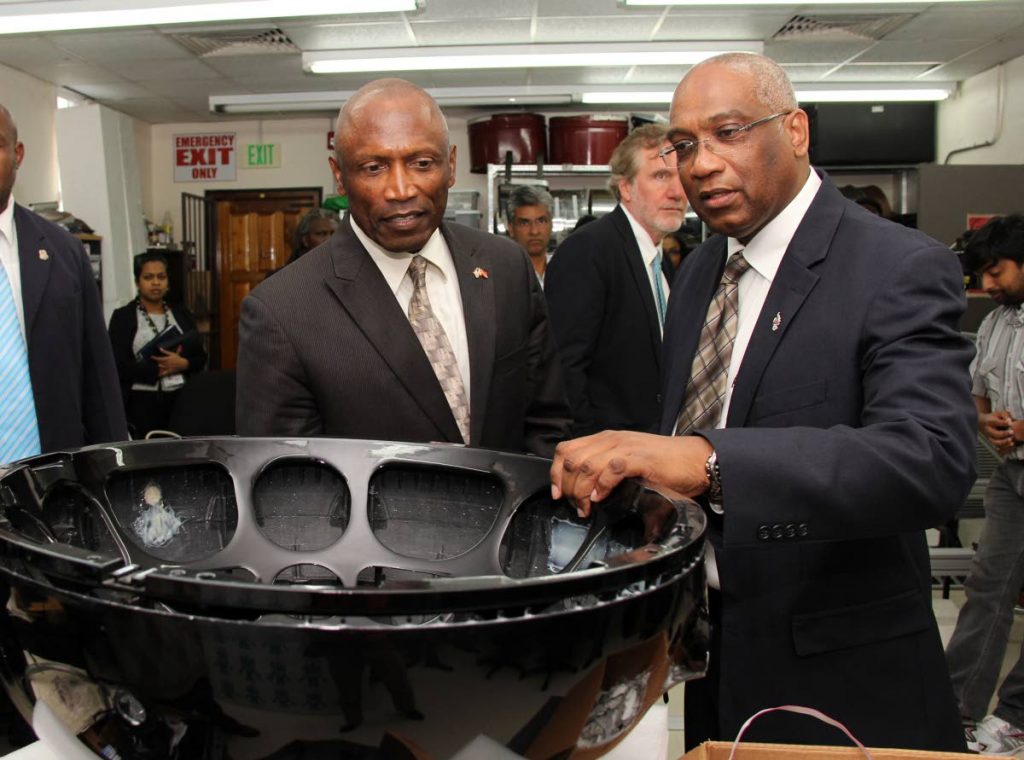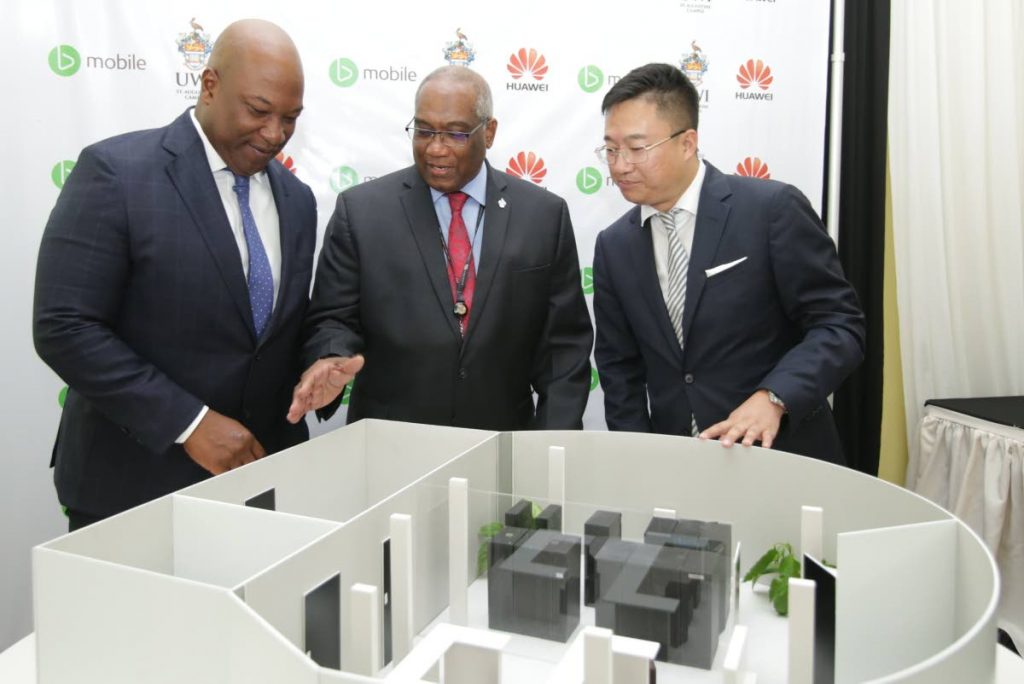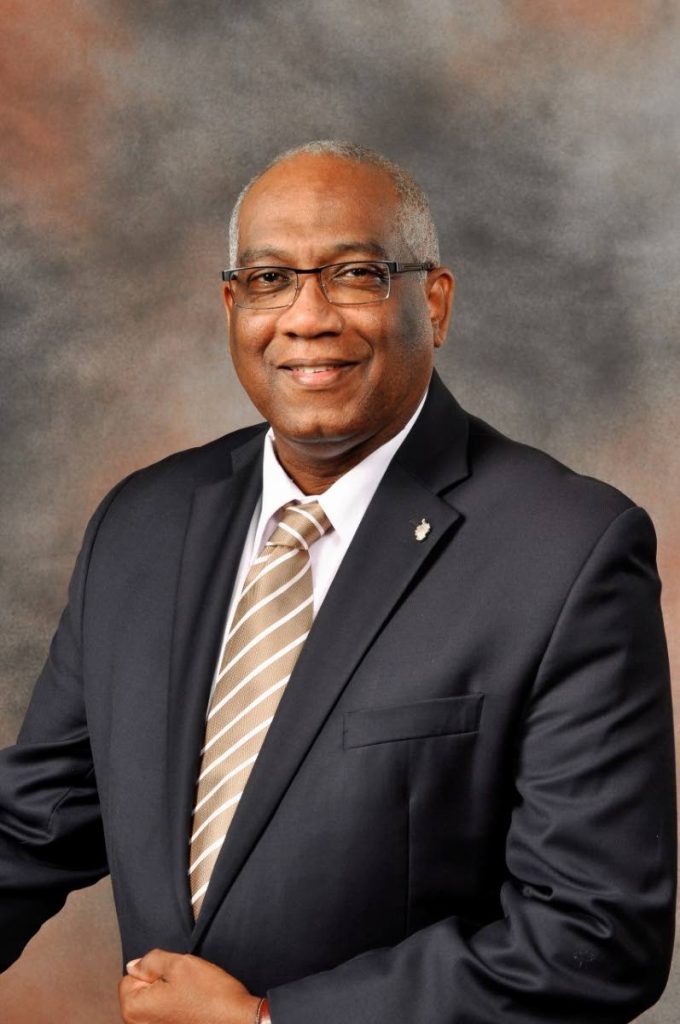Research, development and innovation: Giving Trinidad and Tobago businesses a competitive edge

Who would have thought that the modern computer circuit would have been invented using theories derived from ancient Greek philosophy?
Greek philosopher Aristotle who died in 322 BC developed a system of logic based on two propositions – true or false. In the 1800s, English mathematician George Boole used this philosophy to develop a symbolic mathematical system which is now called “boolean algebra.”
Using this algebra he wrote several papers, mathematically investigating the laws of thought and the nature of logic. In 1938, American mathematician and electrical engineer Claude E Shannon completed a master’s thesis at MIT based on boolean algebra, which when it was applied revolutionised the study of switches in electrical circuits. This eventually led to the modern computer circuit, the basis of all the technology we use today.
The point is that people tend to underestimate the value of good research and development. Today, research and development is one of the keys to business growth. Research and development leads to innovation, which in business could give one a competitive edge.
On a wider scale, research, development and innovation could benefit entire sectors and the wider economy. A company, or a country that invests more in research and development will achieve more and could provide real-world benefits to its people.
Trinidad and Tobago is one of the many countries that could be accused of not paying more attention to research and development (R&D). A GlobalEconomy.com data index on research and development expenditure indicates that the average value of expenditure for research and development between 1996 and 2017 was 0.09 per cent of GDP. Today it is about 0.04 per cent.

When compared to countries like the United States which used about 3.06 per cent of its GDP ($606 billion) in 2018 on research and development it could be argued that TT is far behind in the research and development race.
This is why UWI principal and developer of the modern G-pan and the percussive harmonic instrument (PHI), Professor Brian Copeland expressed excitement at government’s plan to implement a research and development capital allowance for up to 40 per cent of expenditure incurred by companies engaged in research and development from January 2022. In his budget reading on October 4, Finance Minister Colm Imbert said the fiscal measure would cost about $25 million and benefit about 1,000 companies.
But Copeland said when it comes to investment in research development and innovation, TT is about 30 years behind.
The (other) man with the hammer
When one thinks of research and development in TT, those who are aware would immediately think about the G-pan, the modern innovation to the national instrument developed by Copeland and a group of engineers in 2007. Copeland told Business Day the idea to develop the G-pan came from a question from then-prime minister Patrick Manning of the possibility of a steelpan that was an improvement the traditional steelpan invented in the 1930s.
“There were some challenges with the traditional pan. There was a limited number of notes from the single drum for the tenor and the quality of notes in the middle made it difficult to play and play well,” said Copeland.
He said the key efforts of developers like himself and engineers like Clem Imbert and Richard Mc David were to expand the range of notes and improve on the sound quality in order for it to be heard at the highest level of performance. The engineers then put together the Steelpan Initiatives Project and began working on what could be considered one of the biggest innovations on the only percussion instrument invented in the 21st century.

Much like Boole and Shannon, Copeland looked at research done by the many people who contributed to pan over the years, pulling from papers that were written before.
The project, funded by the government of the day, cost about $30 million, Copeland said. About $18 million of that went into the development of the G-pan itself, the rest went into site development.
“At the height of the project we had two teams working. Because the pan is a big instrument it started to need labs and engineering, so we moved it to a facility in Macoya with all the equipment and so on.”
That eventually led to the design of the new and improved G-pan with a better sound and a wider range of notes. But Copeland and his team did not stop there. They went on to develop the pan from their design.
Copeland said one of the intentions of the development of the steelpan was not only to improve on the original design but to have a steelpan product which could officially and legally belong to TT.
“The PM was very adamant that we became the centre of all that is pan. We thought we could do that by compensating for an oversight in history where we didn’t make a patent for it, although people globally know that it comes from TT. We still needed something that was more official in a legal sense.”
“But we were not about doing a design and leaving it as a patent,” Copeland said. “You don’t patent unless you are looking at business. We saw we needed an instrument like this in the business as well.”
The thinking behind this was simple: The G-pan would serve as a leader in the business of pan making, and from there a hierarchy of products, the traditional pan included, could be manufactured under the G-pan brand.
“If we take any aspects from the patent we can also call those pans G-pans.”
Research + Development = Innovation
It is as simple an equation as one could get – research and development will lead to innovation; and the ability to innovate makes a business more competitive and differentiates it from others in its field.
“In the end you want a business that is highly competitive and could make its way in the world,” Copeland said. “There are different ways to make a business competitive, but one way that you can achieve that is if you are the only one that has your product.”
Copeland said if a company can identify a use for research results and connect it to a product, customers would pay for it. But the process of research and development must lead to a beneficial innovation in order for businesses to gain from it.
“People use the word innovation very loosely,” Copeland said. “By definition innovation involves two components – one, it is novel; no one has seen it before, and two, it has benefits.”
“If it is novel and no one cares about it, then it is not an innovation.”
He said the economists that he read on when researching for the G-pan said clearly that until one has made one’s first dollar from the research and development, no innovations were made.

“You could be making bread and selling it. Your marketing could be new, but you are still selling bread,” he said. “The ultimate change is covering new knowledge and putting it to use. Once you find a use for it that is significant, then you would have a competitive advantage.”
At The University of the West Indies (UWI) lecturers and students alike go about searching for new information and innovations like explorers mining for gold. But in the effort of researching and finding new information and putting it out into the public domain for the benefit of people, some find themselves giving away the vital information, Copeland said.
“Some people pay to have their papers go into journals,” he said. “You have to pay a fee to get images and other things. But then the paper is no longer yours. You would have to give away the copyright.”
“Imagine that TT puts what little pittance it has to pay you to conduct research and buy equipment, and all that comes from that time effort and money is a paper and you still have to give it away. I always resented that, that is why I went after patents.”
“We being paid as lecturers is like mining a field – you are finding new information and winning new knowledge and the challenge is, how do you find value out of that? Shouldn’t the ones who invested in your effort to bring that knowledge to the fore benefit first?”
Research and development’s IMPACT on covid19
Research and development even had an impact on TT’s response to covid19, through the RDI fund developed in 2014 by government and the university. The fund focused on research and development which would ensure that the effort would have some lasting effect on the national landscape.
“The emphasis of the RDI fund is creating knowledge that is relatively quickly brought to bear to bring benefit to the country. In the case of covid19, you can’t tell me that you have an institution that has all this intellectual capability, all these bright young people and knowledgeable staff that can’t provide support for covid19.”
With the support of the RDI fund scholars at the UWI attacked the virus on the biological front, through a programme titled covid19: infectious disease Molecular Epidemiology Pathogen Control and Tracking, or “Covid19: IMPACT.”
The programme, led by professor of molecular genetics and virology at UWI’s Faculty of Medical Sciences, Christine Carrington, aimed to analyse coronavirus genomes from infected people with the effort to identify different lineages of the virus and monitor mutations to track the virus’ spread, differentiate between local cases and imported cases and to better understand how our bodies respond to the virus.
The research team includes investigators from the UWI, TT’s Ministry of Health, the Caribbean Public Health Agency (Carpha), the University of Oxford and the University of London.
“The way the fund works is you would put out general areas of interest and researchers would bring proposals for funding,” Copeland said. “The work that Carrington is doing, which is the DNA of the virus, came forward as a proposal in 2020. It was a solid proposal and we wasted no time in approving it.”
The research, no doubt has contributed to the Ministry of Health’s ability to track down variants of the disease and conduct epidemiological tracking of local and imported genomes of the virus and its various variants.
TT’s contribution of research and development is not stopping the biological front, Copeland added. He said, as medical equipment became scarce he put a challenge to the engineering department, one which Jeevan Persad, senior engineering technician at the Department of Electrical and Computer Engineering, took up.
The department looked at designs for face masks and face shields, and with the help of packaging supplier Label House, was able to produce them in short order and to worldwide standards.
Craig Ramlal, one of the people who worked on the PHI along with other electrical engineers, also worked on a filter design which could trap molecules of the virus.
“They are ready to launch that right now,” Copeland said. “They completed it about four weeks ago and did beta testing and are talking to a lawyer to begin branding. Individuals used it and we put it in people’s hands and we got immediate feedback from the users. One of the units was given to a hospital and they were happy with the use.”
Private support needed
Through insights and the foresight of the scholars at the UWI, research and development is finding a way to benefit TT through its innovations, by putting the theories and research papers to practical use. Persad, also launched a design company called FaSoVe, which works with researchers to take ideas through the innovation process and make their solutions ready for the market.
The university itself also created a pipeline project called the Innovation Entrepreneurship Ecosystem, a network of special units centers and institutes which works to nurture research and advance innovations so that big ideas generated at the university could benefit the wider society.
“We are pushing for that company to be a holding company for all spin-offs coming out of UWI research,” Copeland said. “They will oversee the whole portfolio, from the faculties where the ideas exist.”
These companies are not only focused on covid19, some projects that could be developed could impact cocoa production through making use of TT’s extensive cocoa gene bank. Other projects are focused on making use of TT’s pitch lake to produce a product that would improve the way people utilise asphalt.
“The expertise is all there – we have students who are interested and energetic, we have staff who are really into the research and development and are laser focused on what they want to do, but what is needed is support mechanisms to help them develop the ideas and see if there is viability to take it out to the market.”
Copeland said what is needed for research and development to make the greatest impact is private sector support.
“There is a need for private investors to come in and put their money to move research forward faster,” he said. “As we learn and we grow we will be able to learn to start up companies that never existed before, that sell products which never existed before. That is where the innovation is.”


Comments
"Research, development and innovation: Giving Trinidad and Tobago businesses a competitive edge"